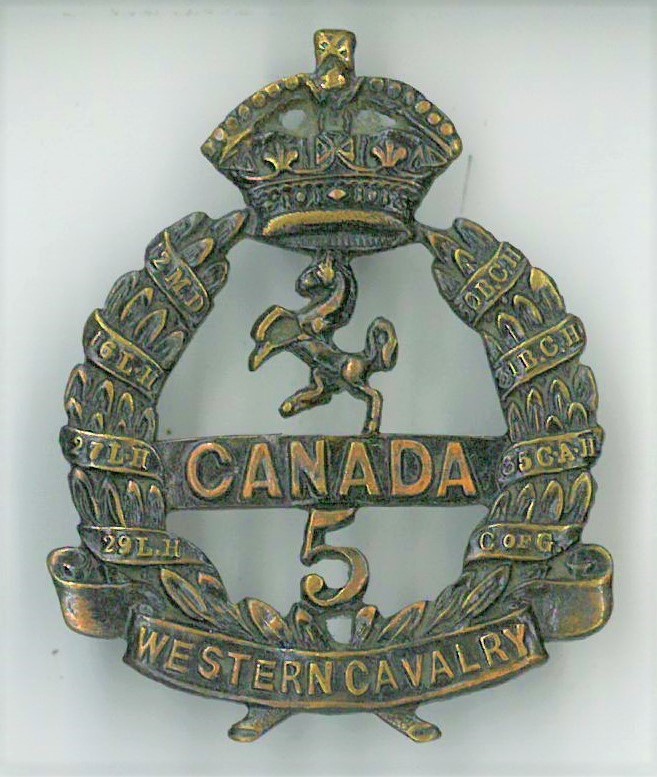Colin Keith Lee Pyman, who was 30 years old with blue eyes, red hair, and a fair complexion, sailed with the 5th Battalion (Western Cavalry) to England on October 8th, 1914. He served briefly with the Lord Strathcona’s Horse (Royal Canadians) in 1915 and was promoted to Captain when he rejoined the 5th Battalion (Btn) in France in September of 1915. In November, he received gunshot wounds (GSW) to both his legs in action near Ploegsteert, Belgium. After recovering, he rejoined his unit in March 1916 in the Ypres Salient. He suffered a GSW to his right hand in June. Upon recovery, he was employed at 2nd Canadian Infantry Bde Headquarters for most of 1917 until posted to the 5th in August. Early in 1918, he went on an Officers’ course until April, when he was promoted to Major in time to serve in the ‘Last Hundred Days’ of the war.

MB-72-147-004
The Distinguished Service Order (DSO) decoration that Colin earned was for “conspicuous gallantry and devotion to duty. This officer was in charge of a raiding party of considerable importance, and the operation’s success was largely due to the manner in which he had thought out and supervised every detail beforehand. He directed the operations with a courage and complete disregard for danger that inspired the greatest confidence in the officers and men under his command.”1 Later, “He
took part in the attack on WARVILLERS on August 9th, 1918, and just before reaching the final objective, he was struck in the groin by an enemy machine gun bullet. His wound received attention, and he was taken to a dressing station and later evacuated to No. 48 Casualty Clearing Station, where he died the following day.”2

For this action, he posthumously earned the Bar to the DSO – essentially a 2nd DSO – “For great skill and gallantry while acting as second in command of the battalion between the 7th and 9th of August, during the advance on Aubercourt. When the line became much weakened through casualties, he collected men together and, after a vigorous fight, placed them in the gaps. He was instrumental in capturing a field gun and a number of prisoners and, on another occasion, in throwing out a protecting flank, thus enabling the advance to continue. He was wounded on the 9th within fifty yards of the final objective.”.3 Initially, he was buried at the Hospital Military Cemetery near Amiens and later re-interred in the Villers-Bretonneaux Military Cemetery, Somme, France.
Colin’s mother in London, England, Florence Pyman, received a silver memorial or ‘Mother’s Cross,’ and her son’s medals and decorations. His father received a bronze memorial plaque or ‘Death Penny’ and a condolence scroll in 1921. A brother, Lieutenant Roland Lee PYMAN, who served in the 12th Battalion, Duke of Cambridge’s Own (Middlesex) Regiment, British Expeditionary Force, was killed in action on May 3rd, 1917. Colin Keith Lee Pyman’s loss was noted by his Kelowna friends, and he is remembered on the Rutland and Kelowna Cenotaphs as C.K.L. Pyman.
References
1] London Gazette 30950 15/10/18
2] Circumstances of Death card, Library and Archives Canada
3] London Gazette 31158 d 1/2/19



